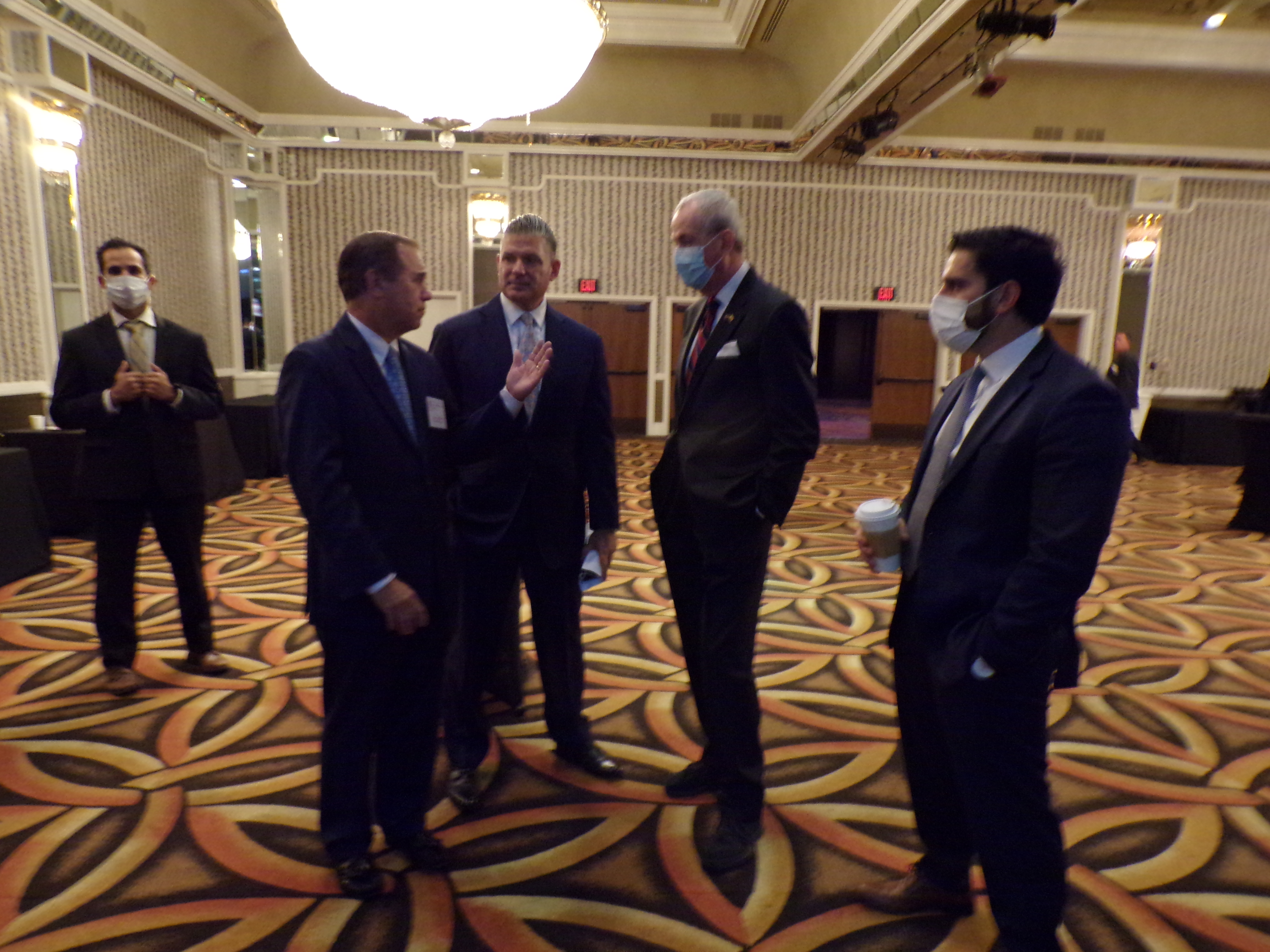Murphy Warmly Received by Building Trades, as Pallone Doubles Down on Biden Bills
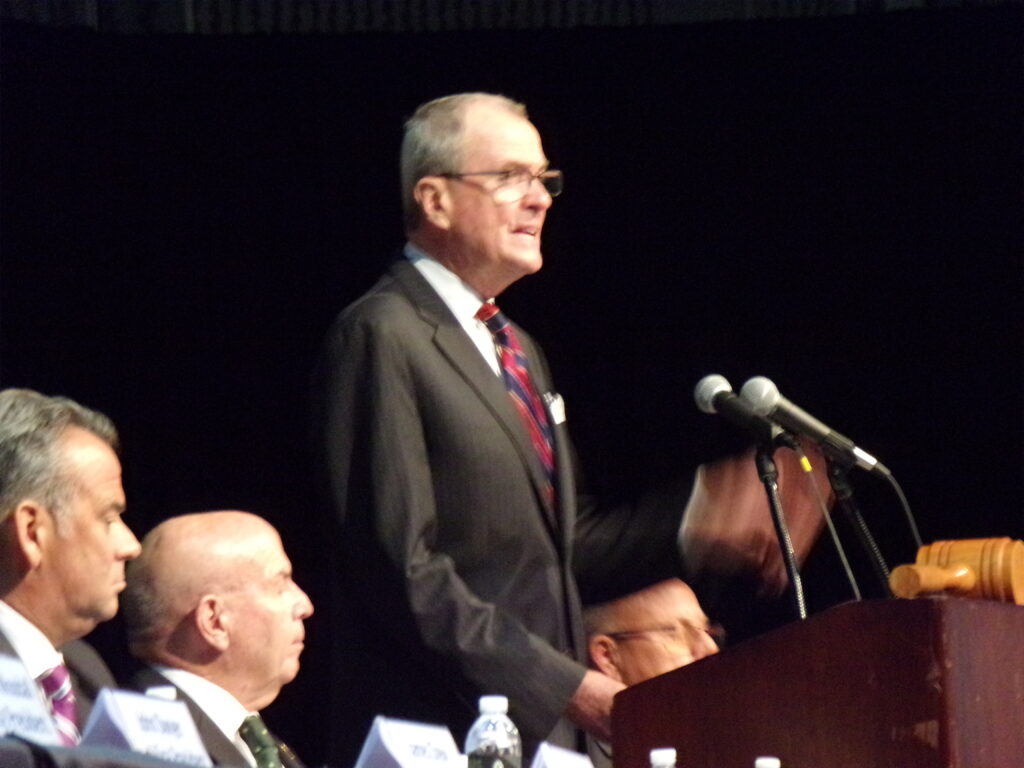
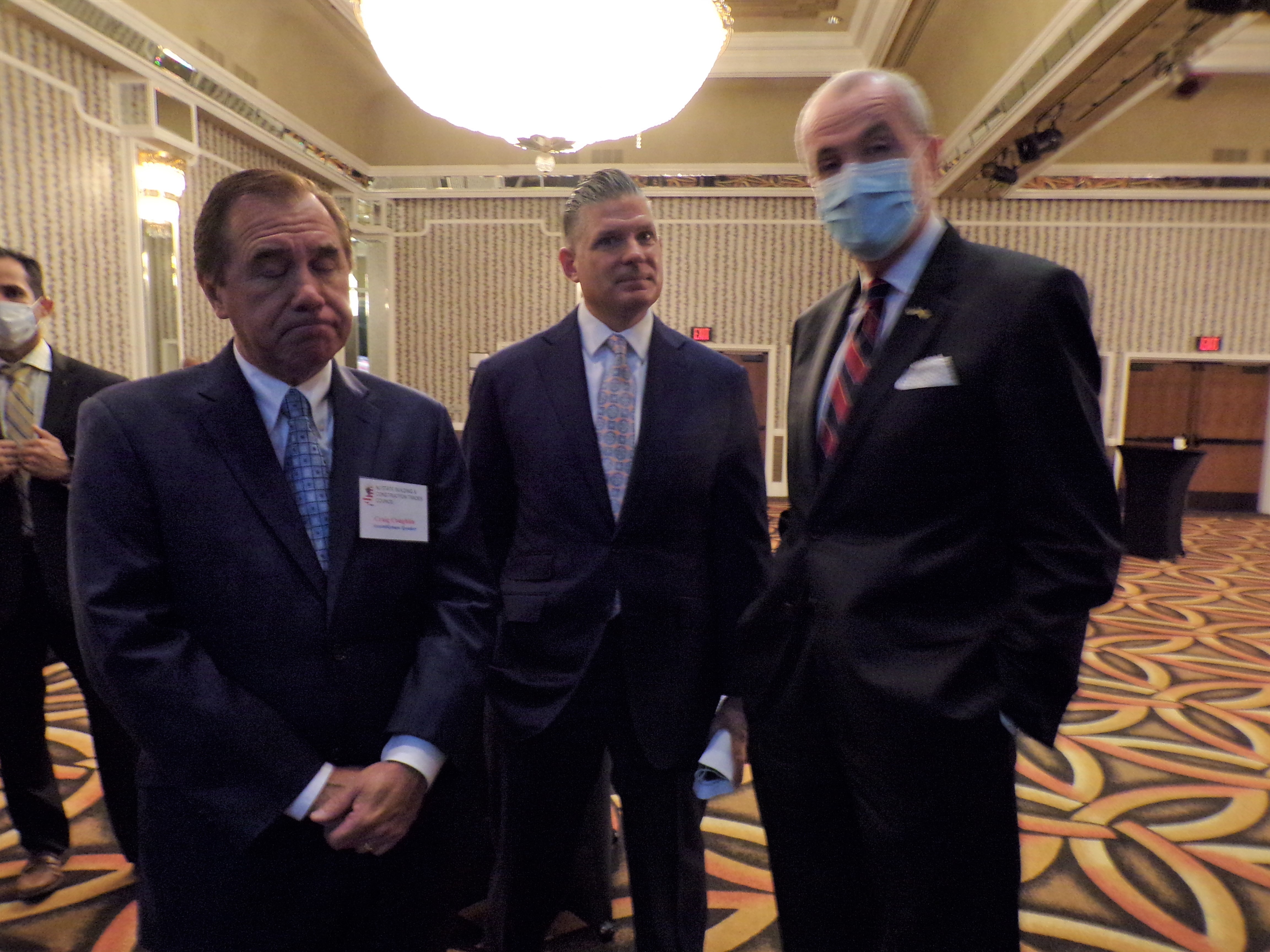
ATLANTIC CITY - Having changed utterly, Democratic Party leaders in New Jersey must tiptoe around Building Trades labor - unless their names are Senate President Steve Sweeney (D-3), Assemblyman John Burzichelli (D-3), Assemblyman Wayne DeAngelo (D-14).
You know the rest.
Assemblyman Joe Egan (D-17).
A handful more, and certainly those attached to the power of South Jersey politics, which affixed the current legislative leadership structure in place.
But it's tenuous, given the history between Sweeney and Governor Phil Murphy, the falling away from the Democratic Party of non-college educated whites, the penetration of the Trump message, Murphy's response to COVID-19 and the impact of the pandemic on jobs and unemployment, and the fact that mostly white males make up the ranks (and definitely its leadership) of the Building Trades.
Standing at the podium this morning in the Hard Rock Hotel at the 116th annual New Jersey Building Trades Conference, Burzichelli made sure to declare himself "a Kennedy Democrat" - but a Democrat nonetheless. In a pointed speech, the assemblyman from Paulsboro made his case for Democrats in state government, on the strength of their having secured higher wages for workers in New Jersey.
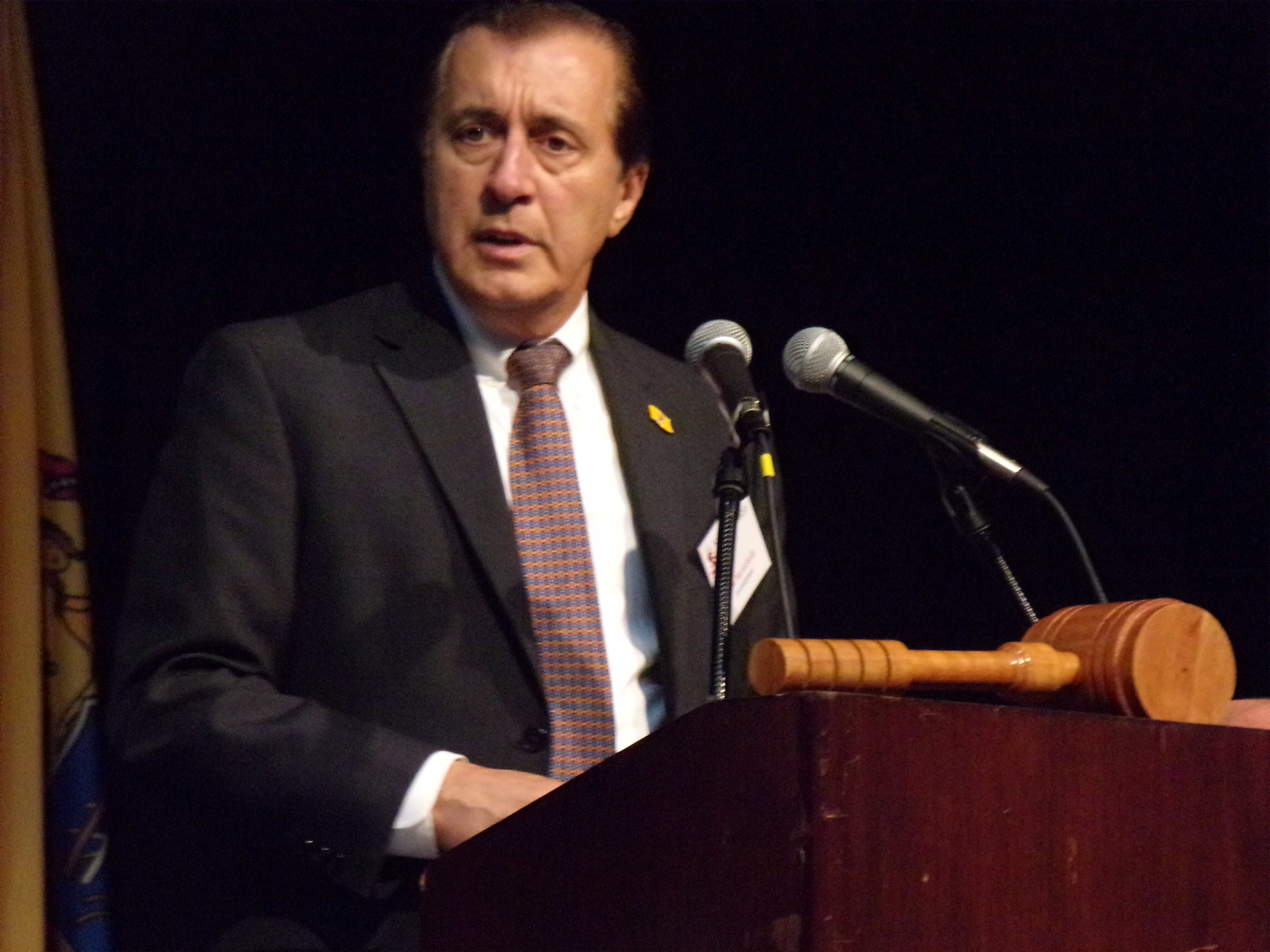
He also reminded his audience to back the reelection of Murphy.
But New Jersey Building Trades President Bill Mullen at this same conference had also cautioned members about aligning themselves with various causes, and former Chris Christie Labor Commissioner Hal Wirths - in a pretty well received speech - had bemoaned diversity for its own sake, remarks that suggested trepidation around a contemporary progressive Democrat like Murphy.
Theatrical design, of course, governed the bifurcation of Sweeney and Murphy into two days.
It was a wholly premeditated move, meant to construct a show of disunity even though nearly everyone at the podium hailed the virtue of unity.
They would occupy a ticket together, not stand in the same room - not this room.
The depth of disaffection had a specific context going back to the 2017 election, when the New Jersey Education Association (NJEA) waged an historic, multi-million dollar campaign to get rid of Sweeney, as punishment for his having partnered with Christie to overhaul public sector labor.
If labor itself suffered from a division at its core between public sector and private sector interests, Murphy conveniently occupied the role of chief NJEA enabler, who had tacitly given the nod for the public sector outfit to politically behead Sweeney.
It made him an enemy, or close to an enemy.
So it became a piece of political intrigue to see how the Building Trades would receive the governor this morning, on the second day of this conference, in their building, on their turf down here in Sin City.
Would he receive boos?
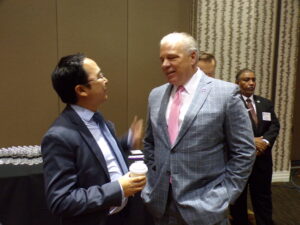
Would someone or multiple people push back their chairs and march out of the room?
Would Murphy even show up as scheduled and risk the political backlash of standing in the presence of so many white males?
Why run the risk in the closing days of an election he appeared poised to win and win big?
These questions percolated in the big room as other public officials spoke and Building Trades members maneuvered around the hulking coffee urns in the adjoining chamber.
Then, suddenly, Murphy appeared.
He was hunched over a table in close-quarters conversation with Speaker Craig Coughlin (D-19) near the coffee table just outside the main ballroom.
Moments later, he alighted inside.
One could picture a guy biting his lips and writhing and a buddy on an adjoining char saying, "Louie, don't say it! Don't say it!"
It never happened.
Nothing close.
Mullen put on an exclamation point on the governor's presence with a build-up speech of praise on the heels of the entire organization formally issuing its endorsement. "He's there for us," said the president of the New Jersey Building Trades. "He understands what we do, as compared with other labor unions. He understands we need more enforcement of the labor laws here in New Jersey."
There was warmth in the room.
It made the double digit lead Murphy held over Ciattarelli seem real.
"He's taken us by the hand, we have to keep going," Mullen said.
He couldn't resist throwing an elbow.
"He has to push his commissioners; make sure they get off their asses and do the work," he added.
Then Murphy walked up onto the stage with Coughlin to the strains of Bruce Springsteen's "Born in the U.S.A."
A standing ovation ensued.
"I join you all in an absolute commitment," said the Democratic Governor, in a state "where union membership is something to be proud of."
Murphy channeled a unification vibe.
"Stop scapegoating unions," he railed, actually prompting applause.
He said he wants to hold organized labor up on a pedestal where it belongs.
Applause.
"One thing is constant over these years - union hands.' Murphy said. "We are protecting this legacy for many years to come."
He acknowledged the rocky past, but no sheepishness crept into his voice.
"We haven't always agreed," Murphy said. "What's important is we have listened to each other and created thousands of new jobs; [including] a $250 million investment in the New Jersey Wind port."
The Democrat described his core principles as union membership s- the "ingle greatest factor in the rise of the middle class."
Then he ad:
"If you want something built right the first time, get union hands to do it."
That remark by the governor just about brought down the house.
"I'm proud to have great partners in this work," said the governor, ticking off the names of legislative Democratic leaders, starting with Sweeney.
Another big, rousing standing ovation ensued as Murphy exited.
"I believe governor Murphy is going to push this thing through for us," said Mullen.
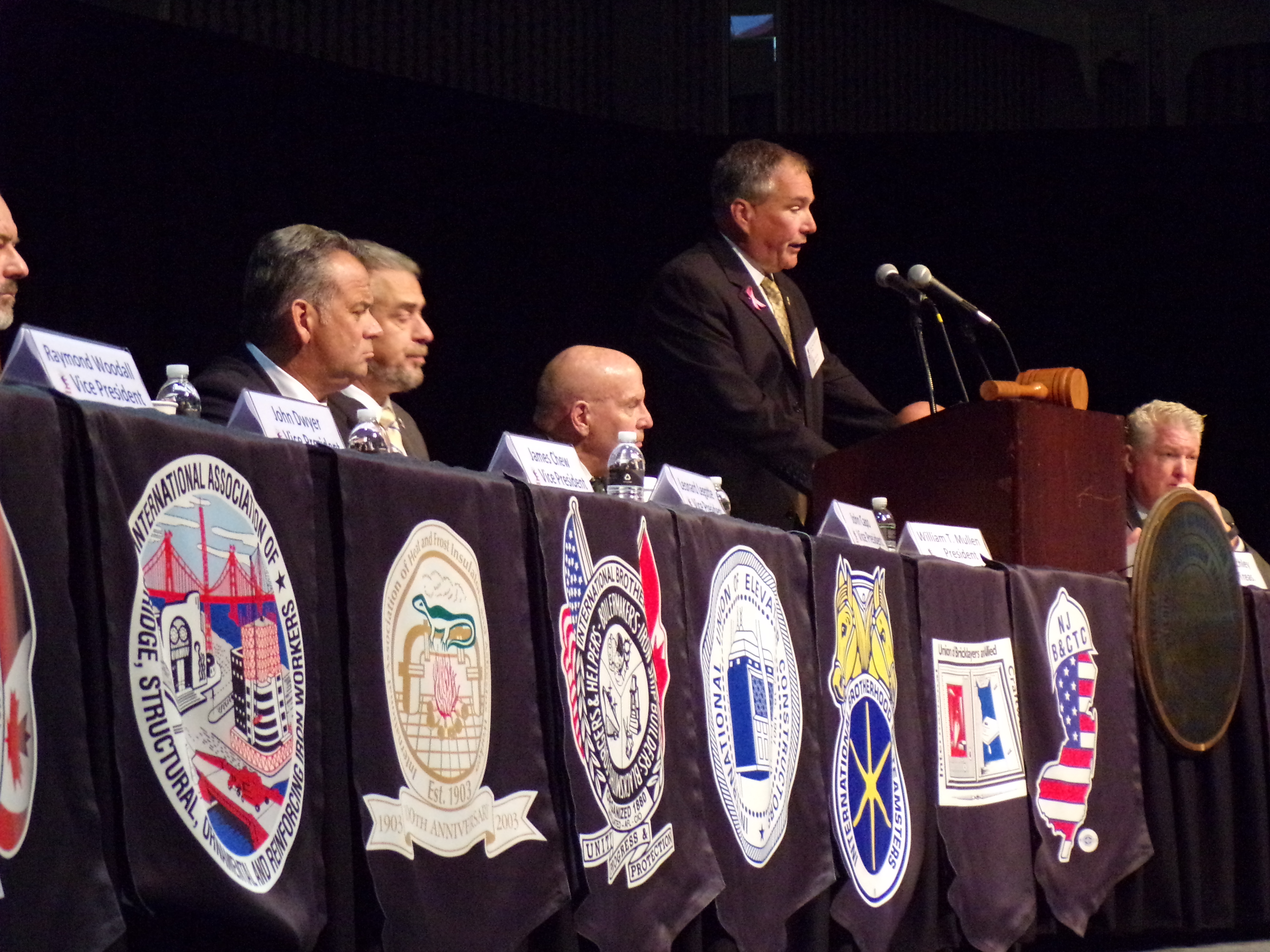
The morning proceeded not without some dramatic twists from the podium, starting with Wirths, whose message might have penetrated somewhat, if not for the final overwhelming showing by Democrats across previously fissured lines.
"I'm very disappointed with politicians [in Washington, D.C.]," said the former labor commissioner under Christie. He chopped at the $3.5 trillion federal reconciliation bill.
"Something taxpayers can't afford," he said. "We need wind, solar, natural gas, nuclear.
"I do think you should get the vaccine but you should not lose your job if you don't," he added.
But he lingered on the other, $3.5 trillion infrastructure bill.
Up or down vote.
Break it away from the reconciliation bill.
"The other bill should come later," he said.
U.S. Rep. Frank Pallone (D-6) showed up to make an impassioned case for both bills.
Earlier, Burzichelli had been careful to peel state government away from what's going on in Washington, but Pallone - powerful chairman of the House Energy and Commerce Committee - insisted on arguing the totality.
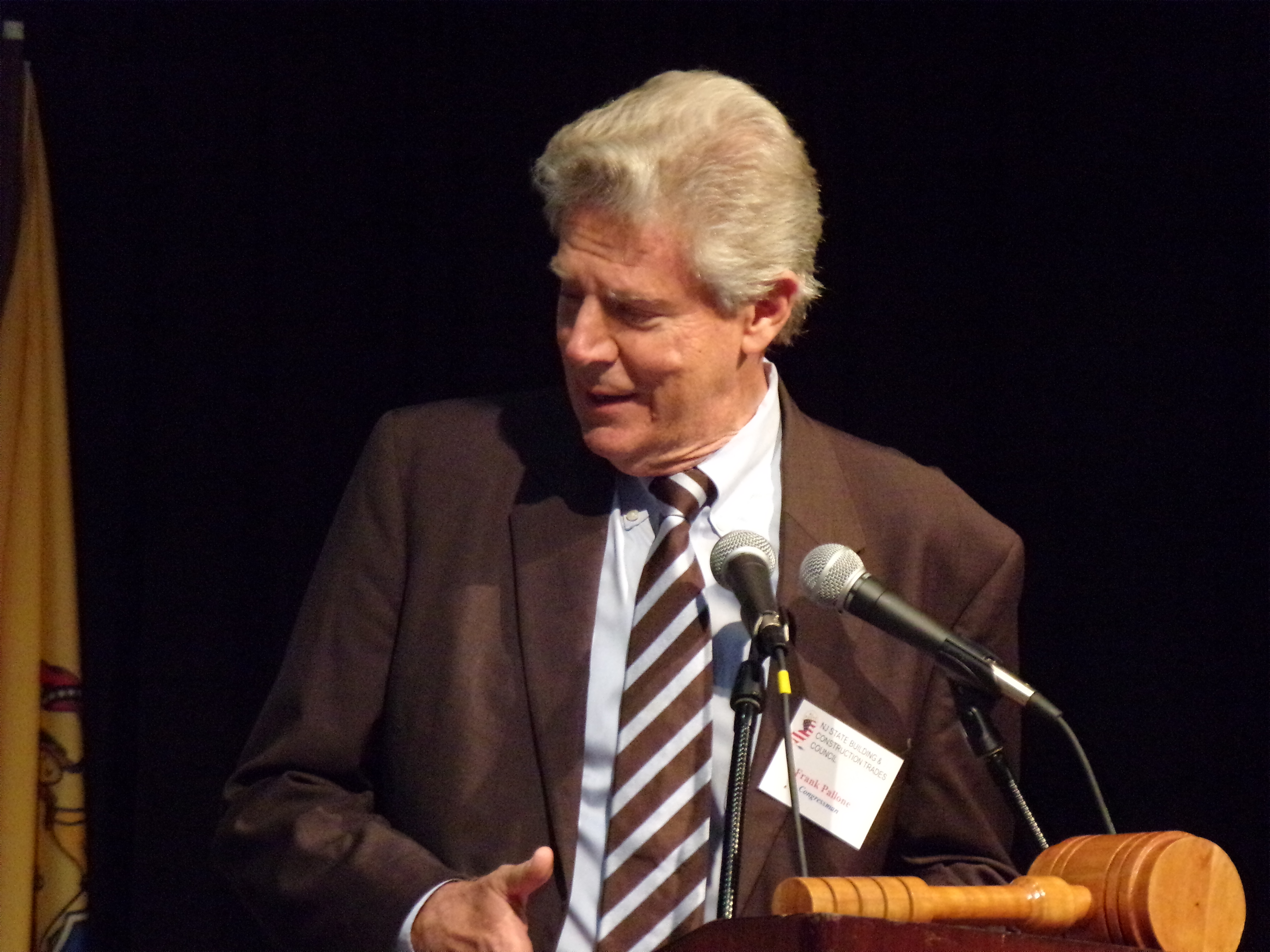
"I love the Bruce introduction," said the Long Branch resident. "He lives in my district."
The congressman had walked in to Born to Run.
Then Pallone made the case for both Democratic bills as an expression of core labor values, including collective bargaining, and good jobs at good wages.
"That's what Democrats are committed to, not only because Building Trades are the backbone of America."
The congressman noted the value of the American Rescue Plan to get the country out from under the COVID crisis, and contextualized state and federal history and aims.
"Two years ago we were very concerned we had to get out of the crisis," he said. And with the additional bills "what Democrats were trying to do was to think about the lessons of COVID. I'm so supportive of Steve and Craig and Murphy. They weren't getting a lot of help from the Trump administration and the federal government. We were able to do a lot of things not happening in other parts of the country [with state leadership here] and when I go out on the hustings my main thing is how they dealt with the crisis. They provided the money to clinics and protection. If for no other reason that's why they should be reelected."
The American Rescue Plan built on the supply chain, making sure "we weren't relying on china for our manufactured products."
"That's what the American Rescue Plan was about," Pallone added. "But what we're trying to do now with this package is build on that. There's a lot that needs to be done for working families. Infrastructure has fallen apart. This is one package. It's not going to happen, one without the other. The only way they're going to pass them is both. The [infrastructure bill] will be $2 trillion instead of $3.5 trillion but still a lot. Mass transit. A lot of that is in that infrastructure bill. Lead pipe remediation. Grid improvements. $100 billion for road repairs. $50-60 billion for mass transit, including the money for Gateway."
But the Build Back Better bill is also good for labor, the congressman hastened to add.
It too will go from $3.5 to $2 billion in the final version, but it will contain even more - $300 billion for public housing; [money for] safe drinking water; $80 billion for schools construction.
"I want you to think of this as one package," Pallone implored. "We have a lot of things making in there, including 12 weeks of paid family leave; good wages; good health benefits. ...When you do your lion's share, there are deals with infrastructure projects in both bills. All these other things will benefit you and your spouses. When is it going to happen? We have set ourselves another deadline - October 31st."
Pallone too received a standing ovation.
It was election time, granted.
Sweeney and Murphy would likely go back to strangling each other after Nov. 2nd.
But for one brief, shining moment, after the COVID catastrophe and all the political turmoil, not to mention actual casualty-causing storms, Murphy - the kid with Boston Irish roots - could stand at the head of something approximating the working class Camelot he probably envisioned at the outset of his foray into New Jersey politics.
Someone buzzed about no signs with Murphy's name on them in South Jersey.
If it signified any lingering doubts about Murphy down here, it could always be spun as part of the plan that he would concentrate his efforts in the North, just as Christie did in 2013, while not mangling South Jersey's well-oiled designs by insisting on intervening beyond his appearance at a microphone in the Hard Rock.
